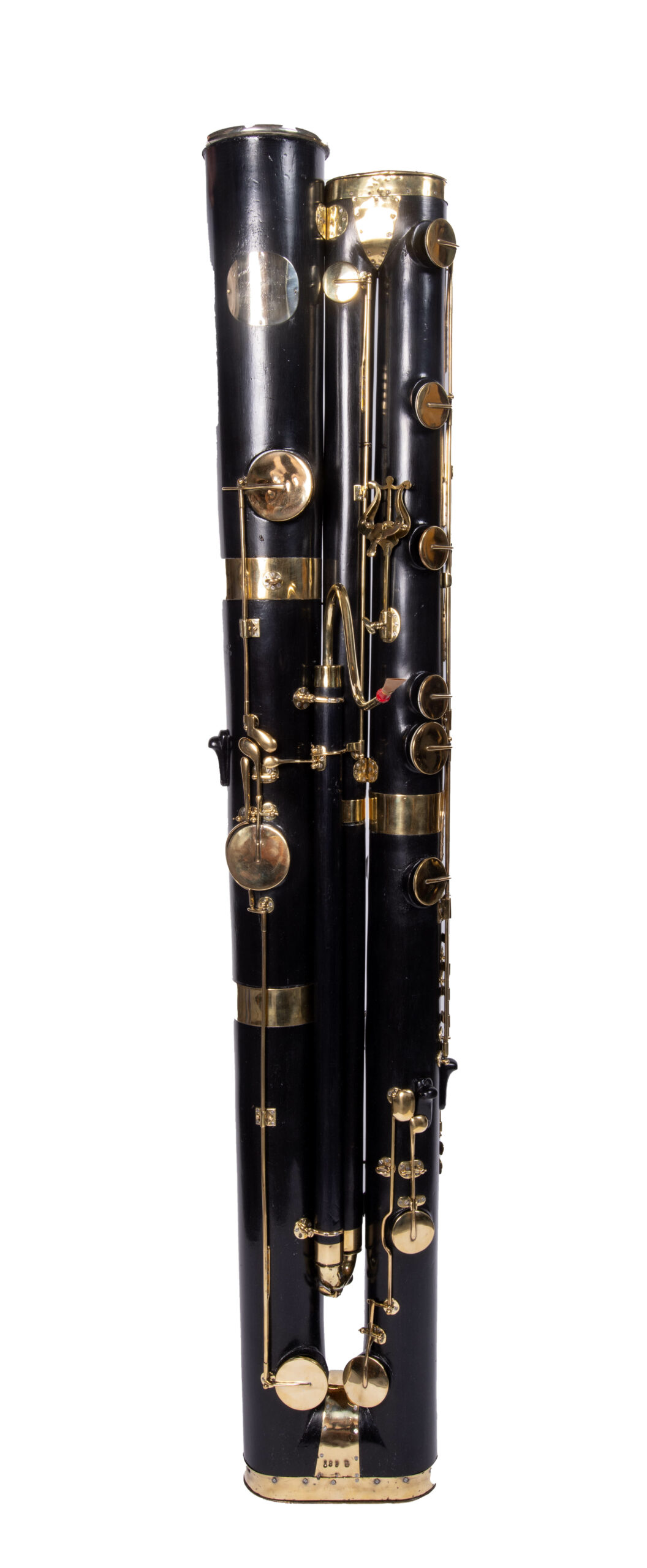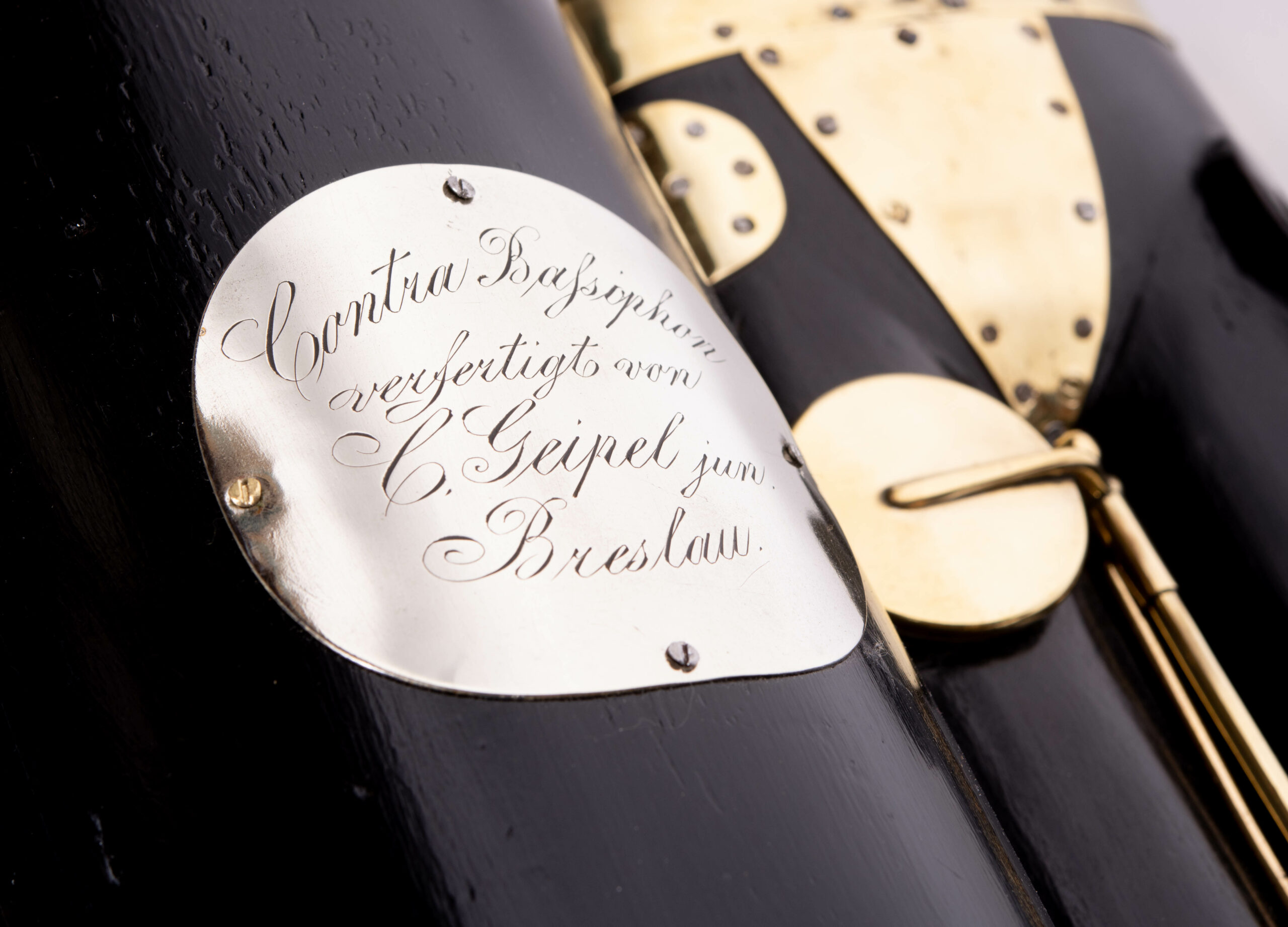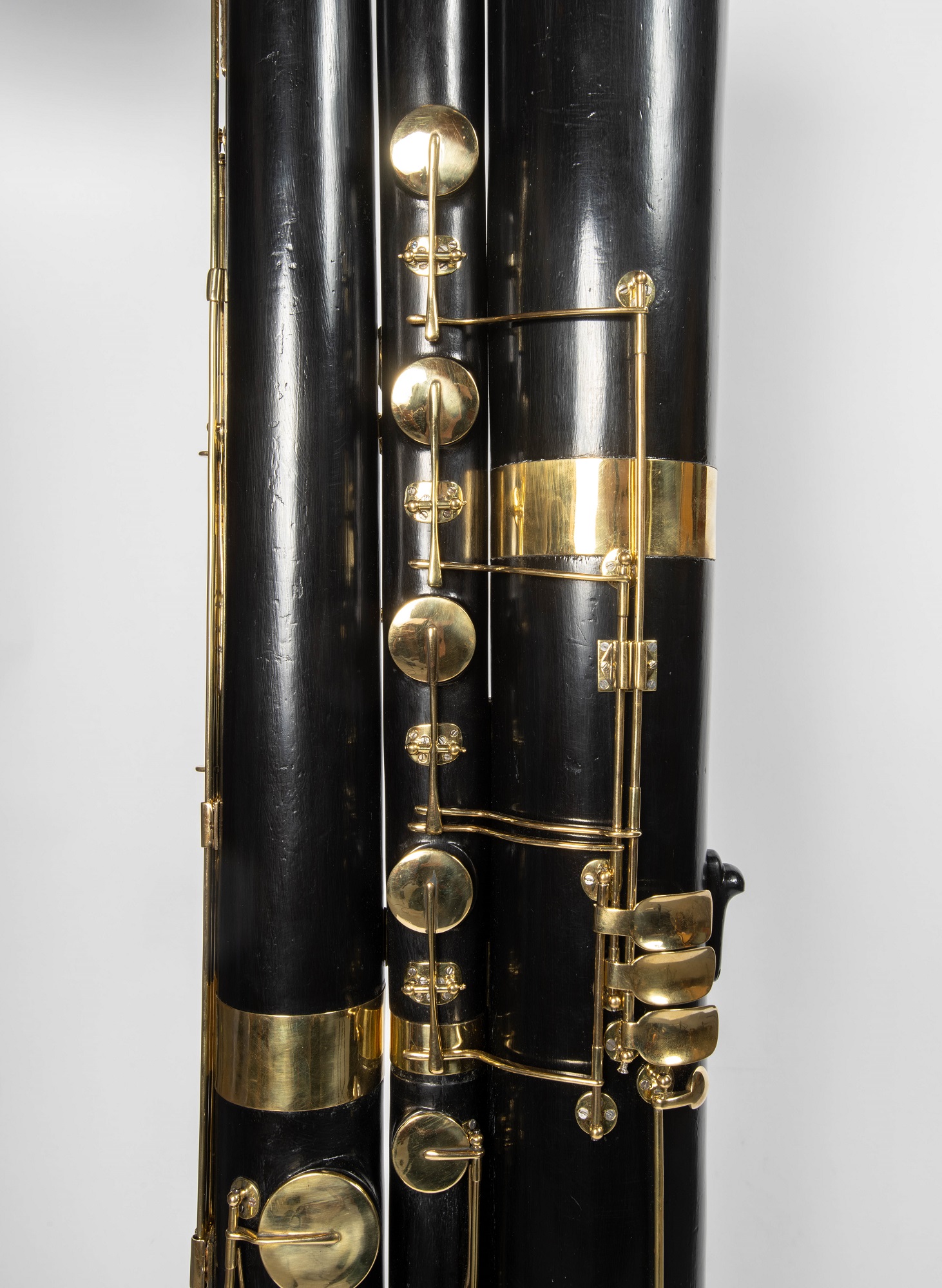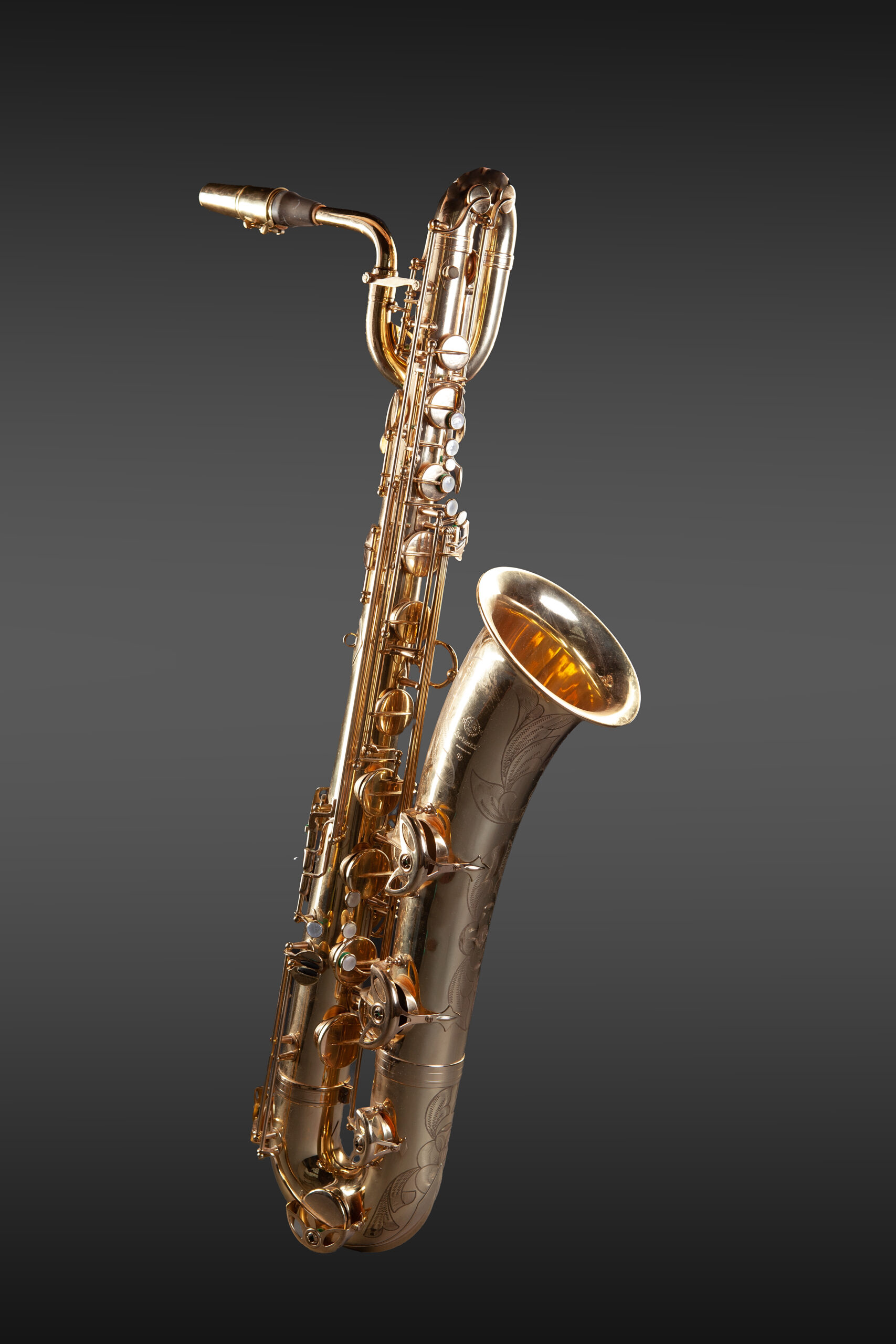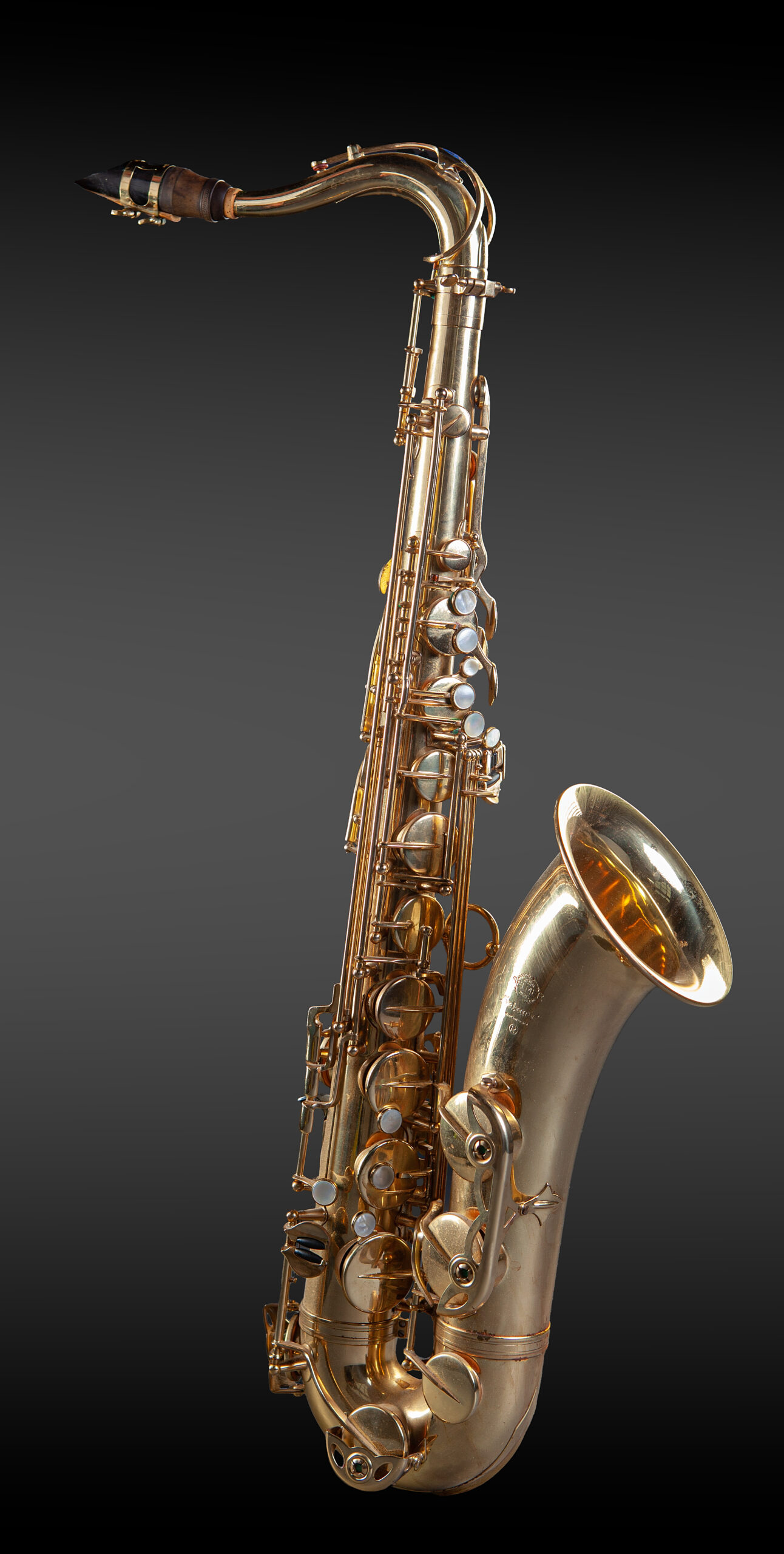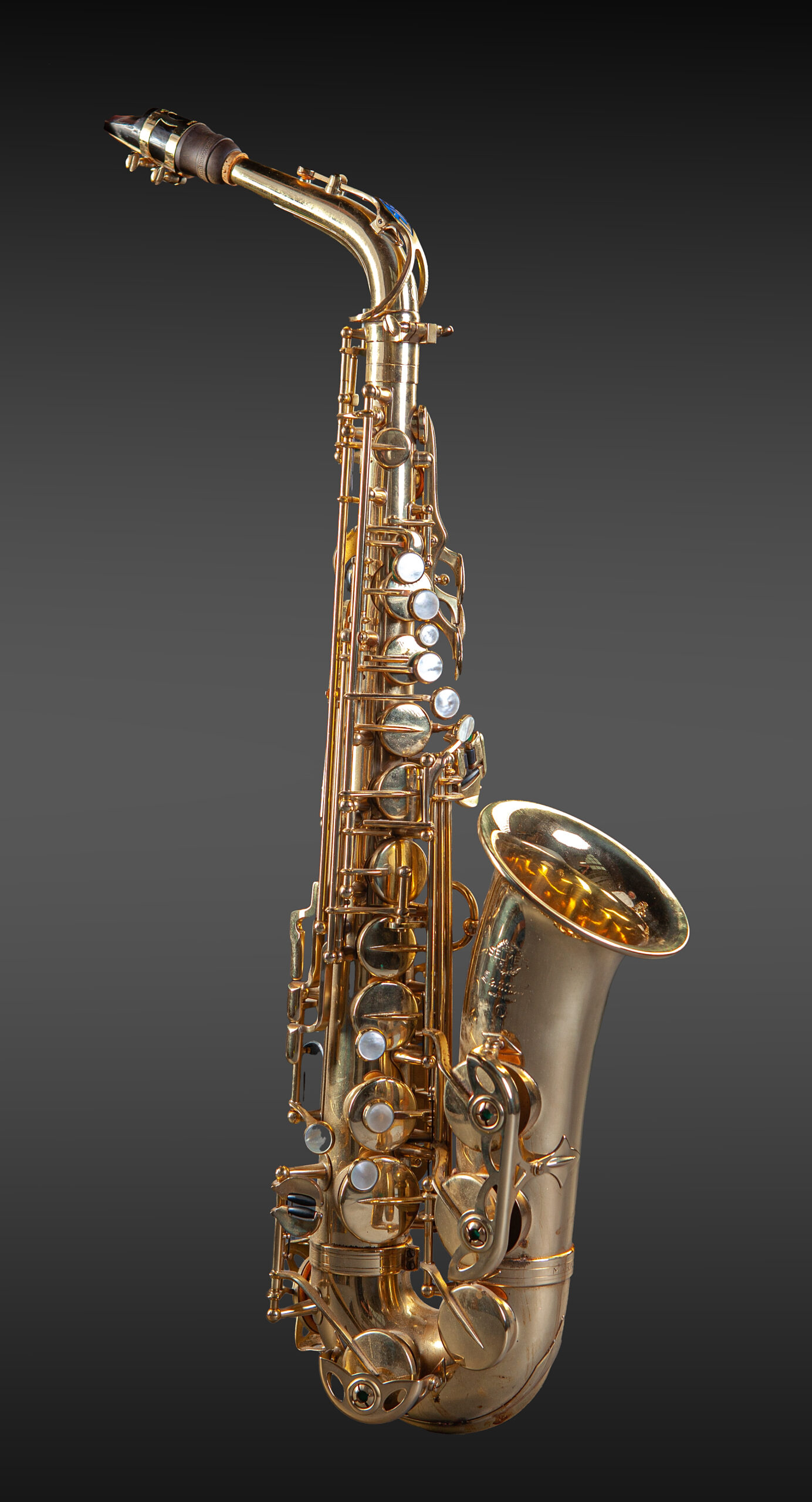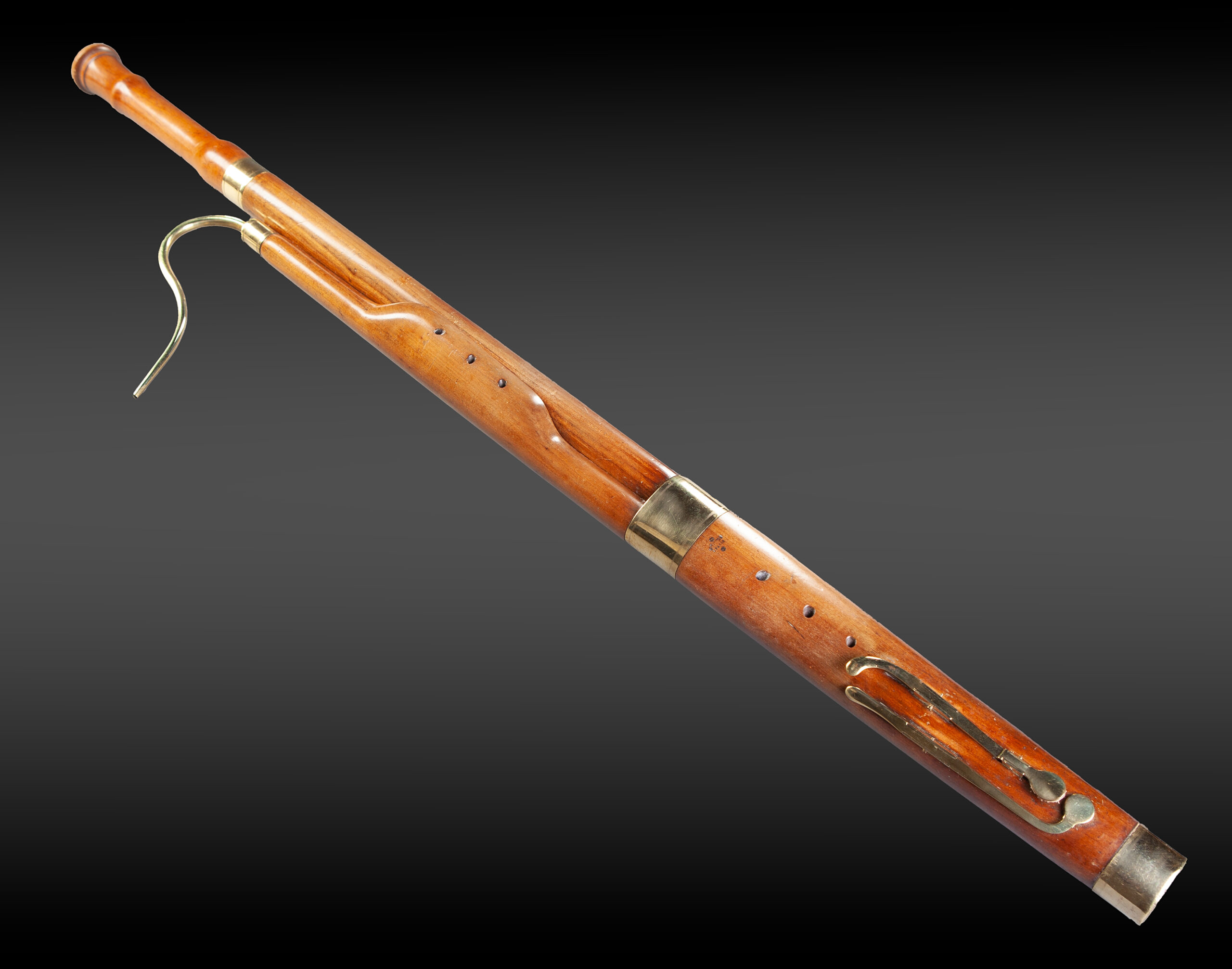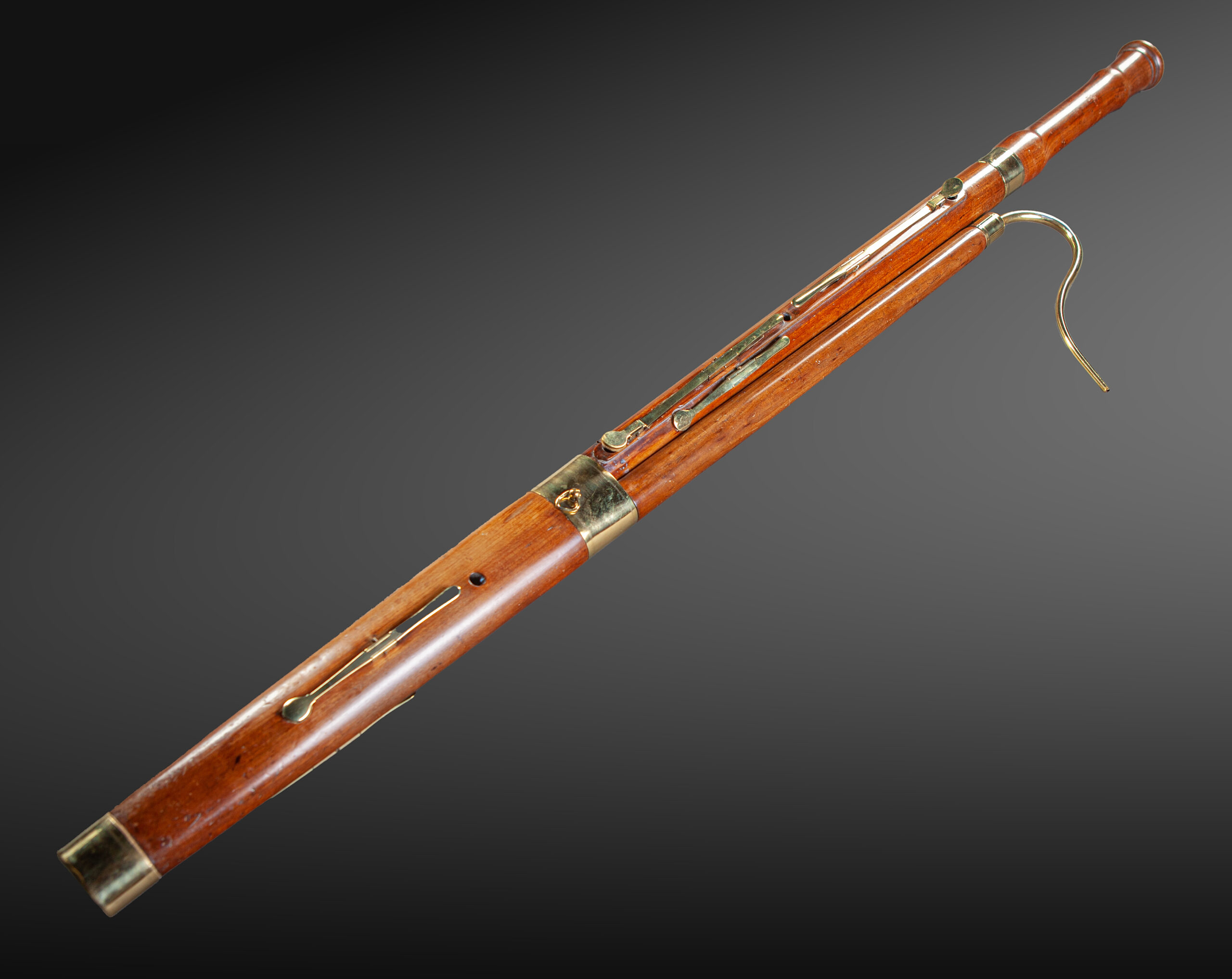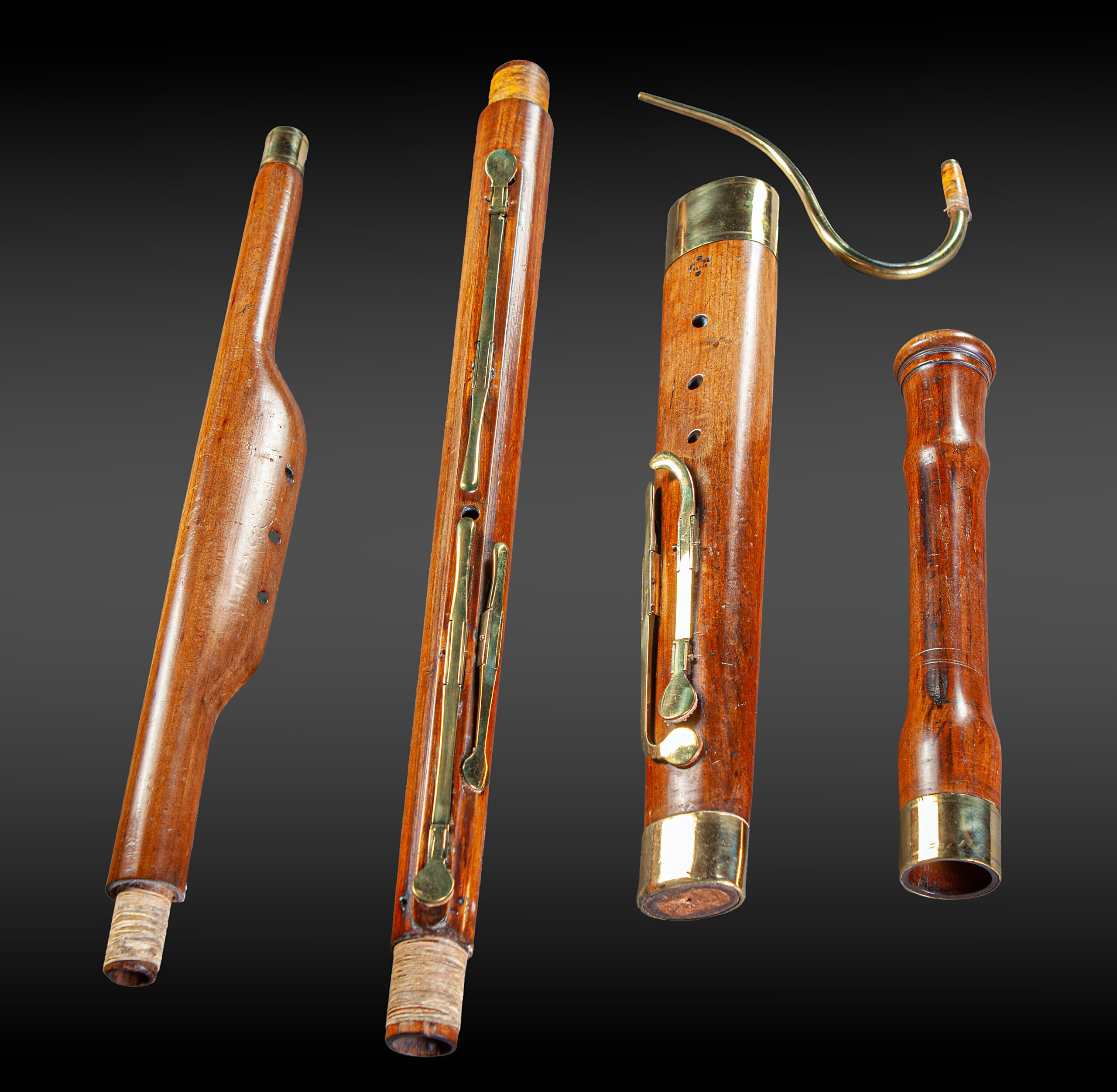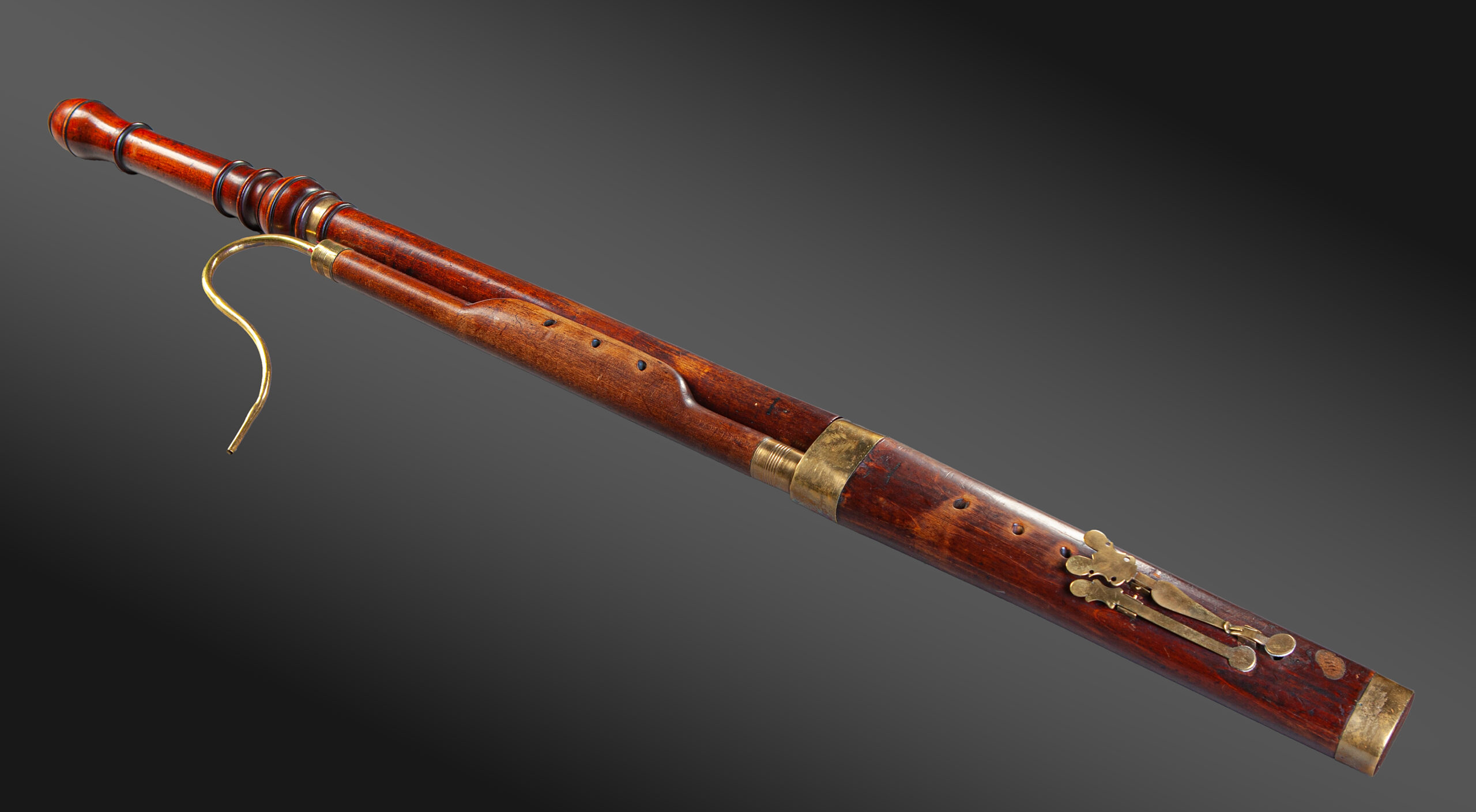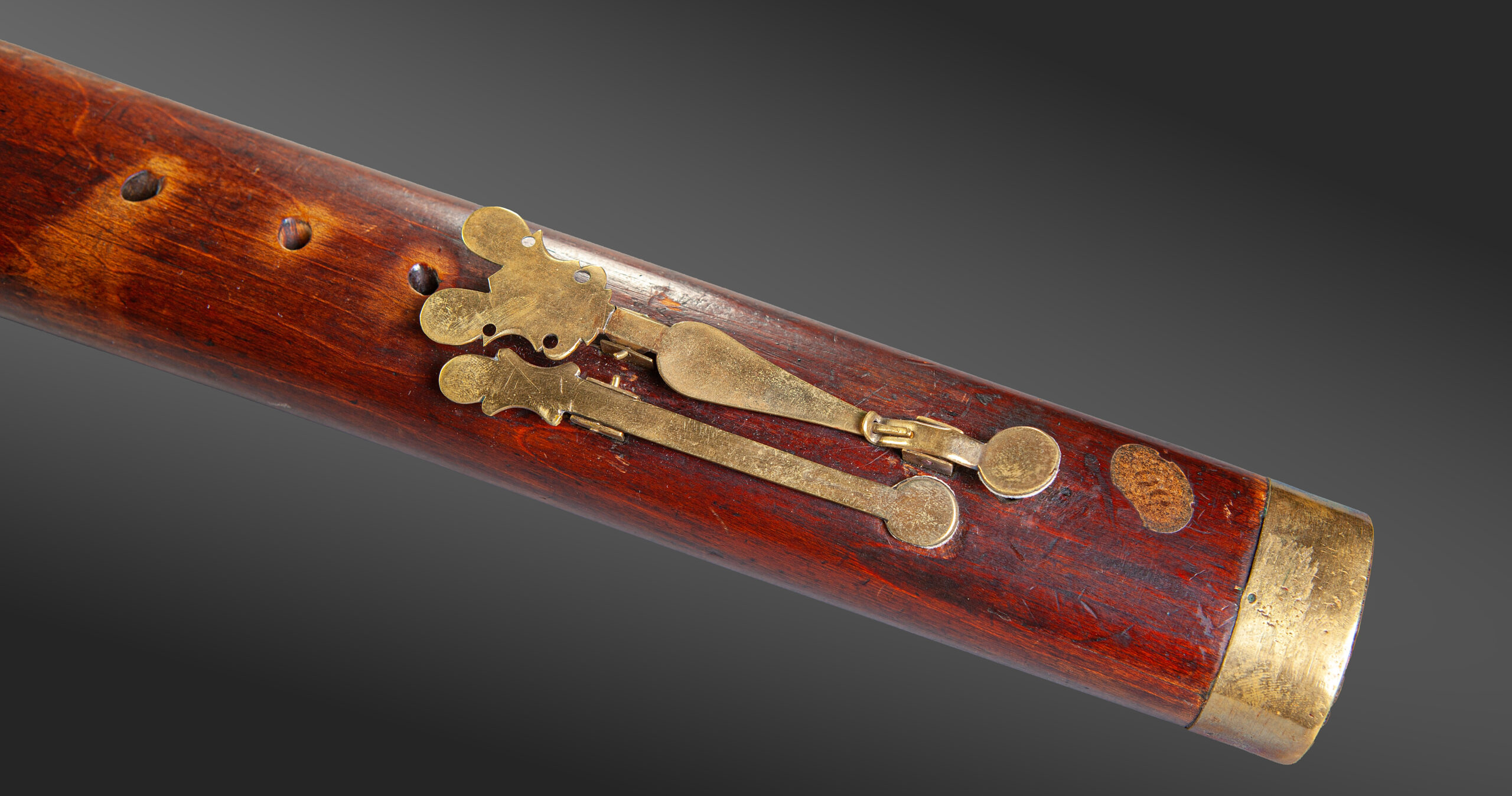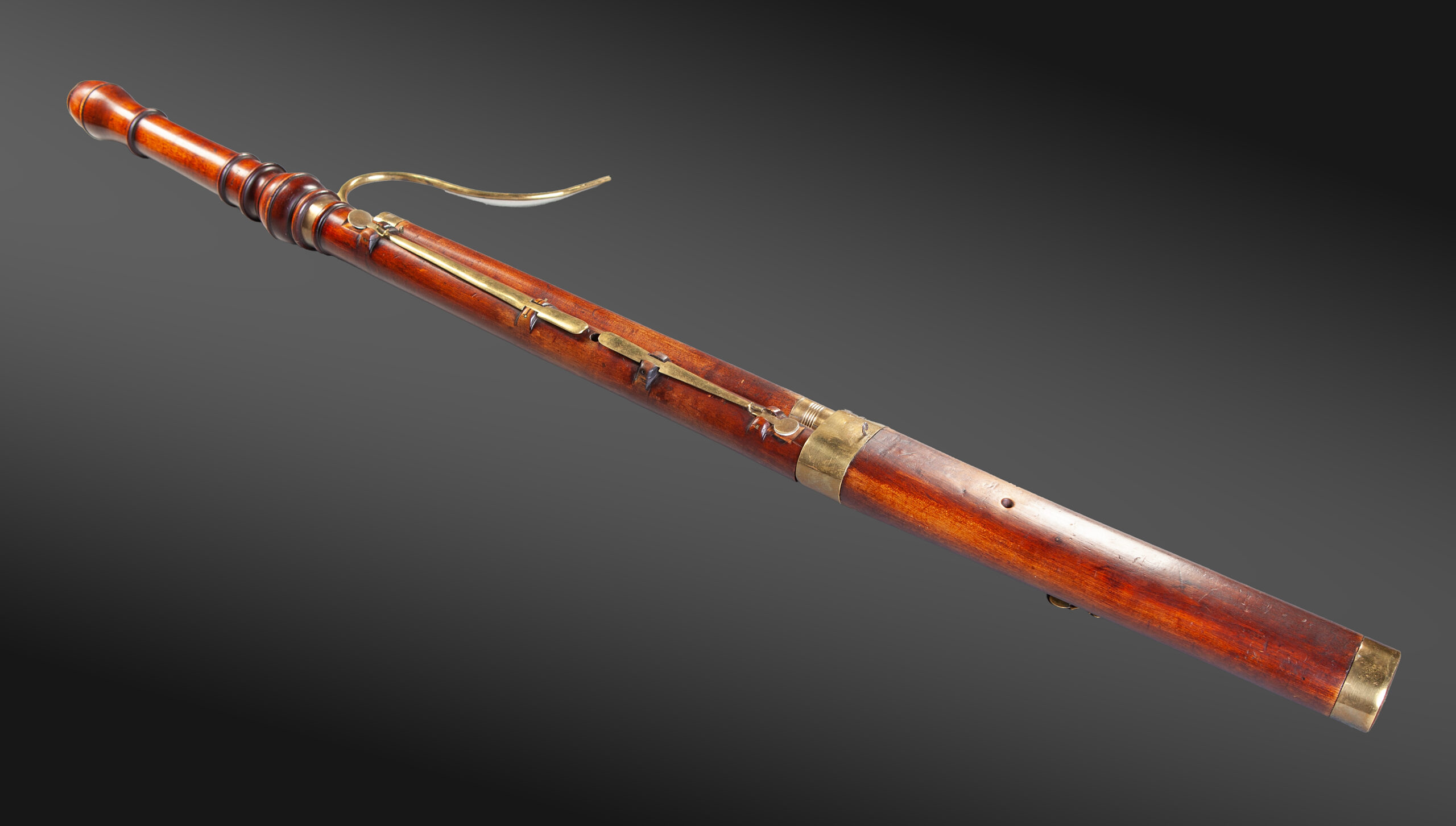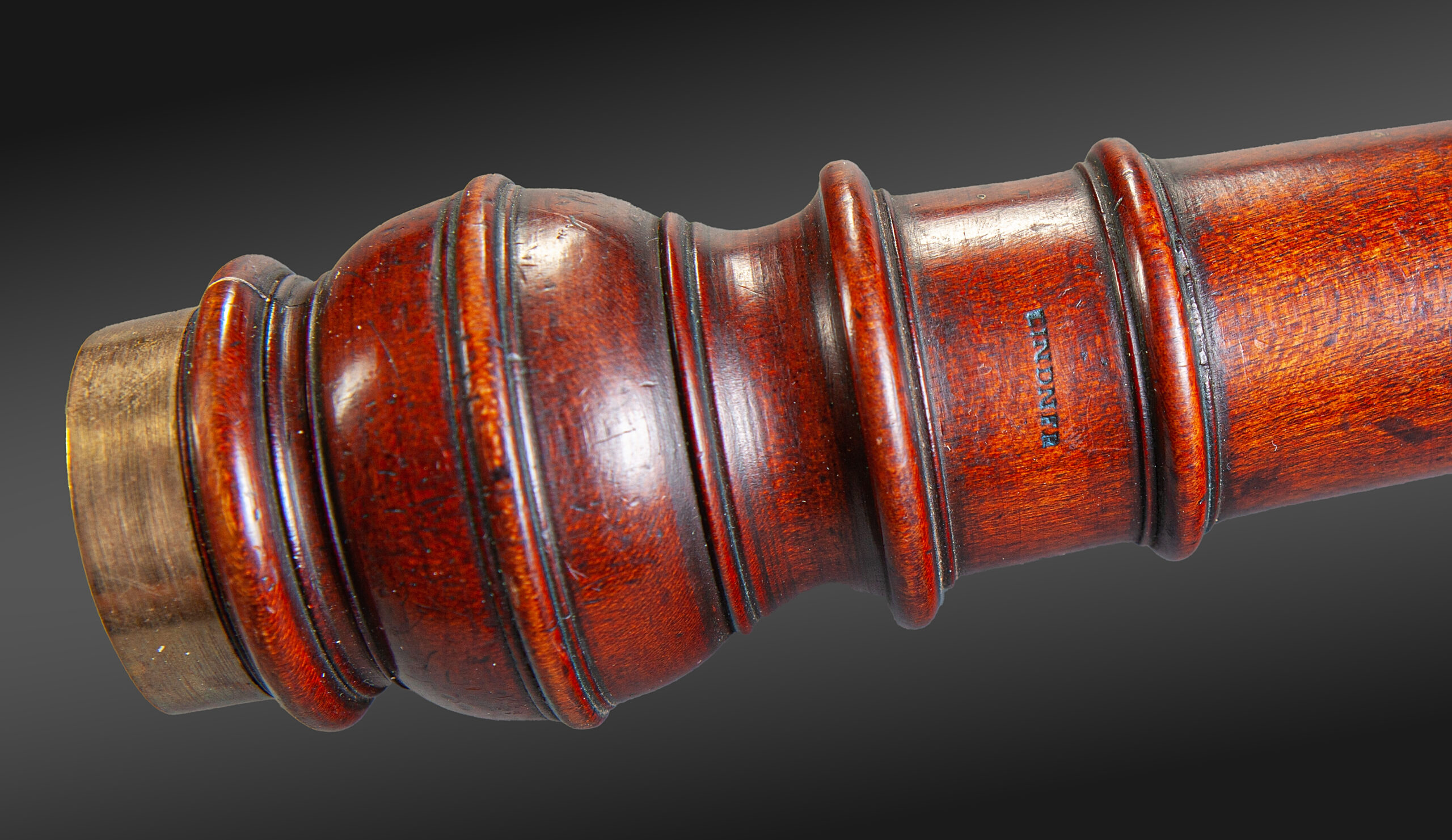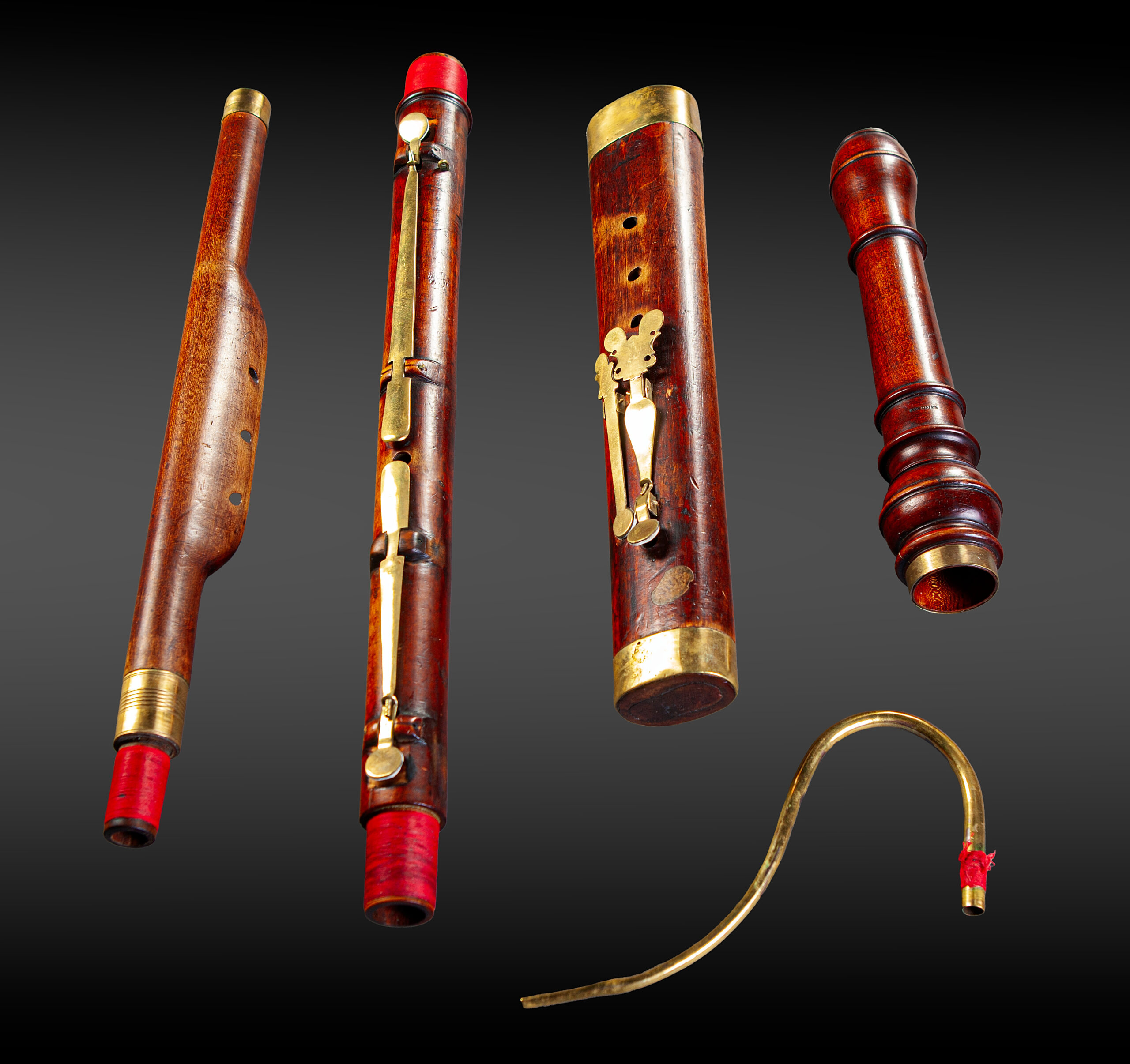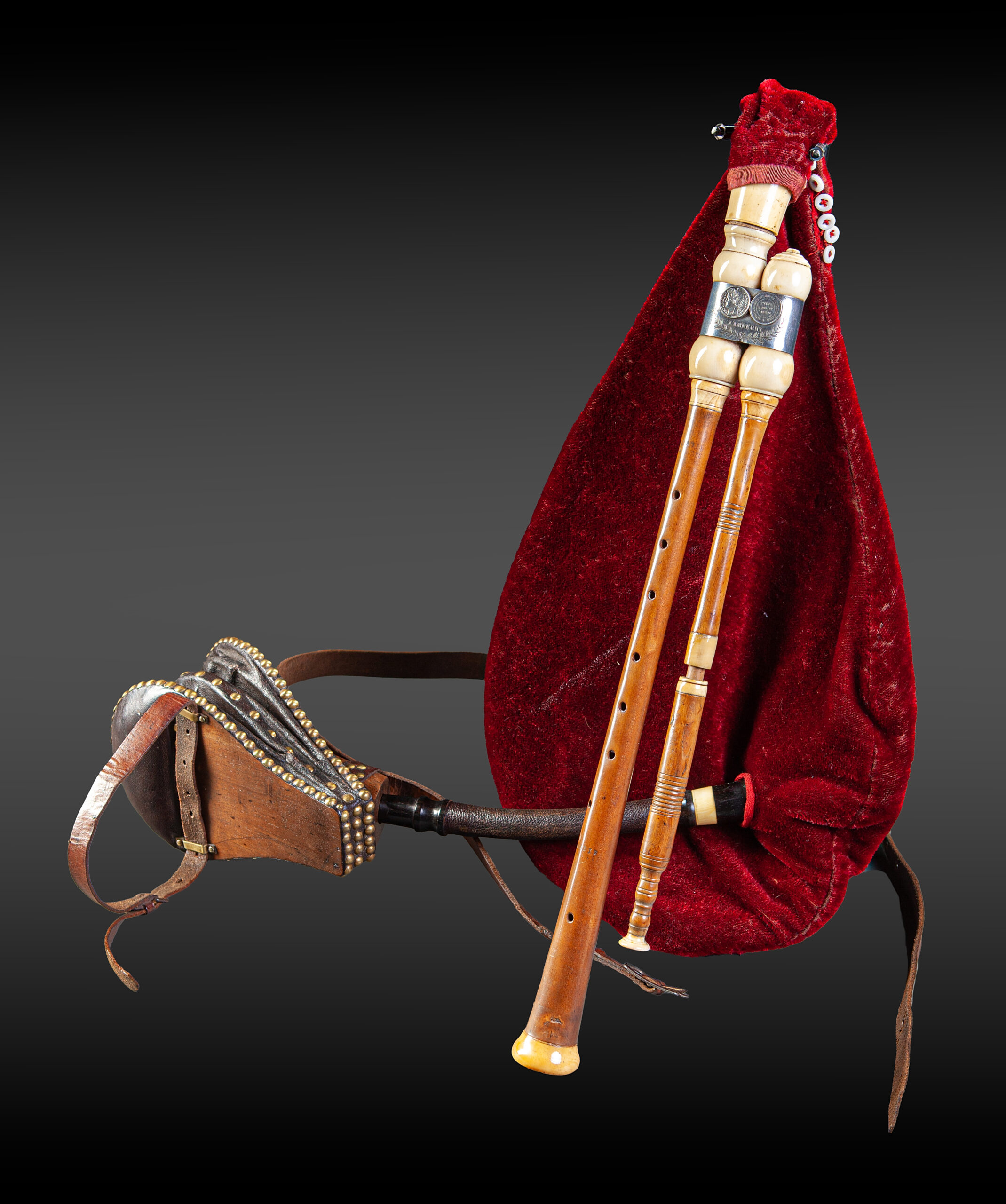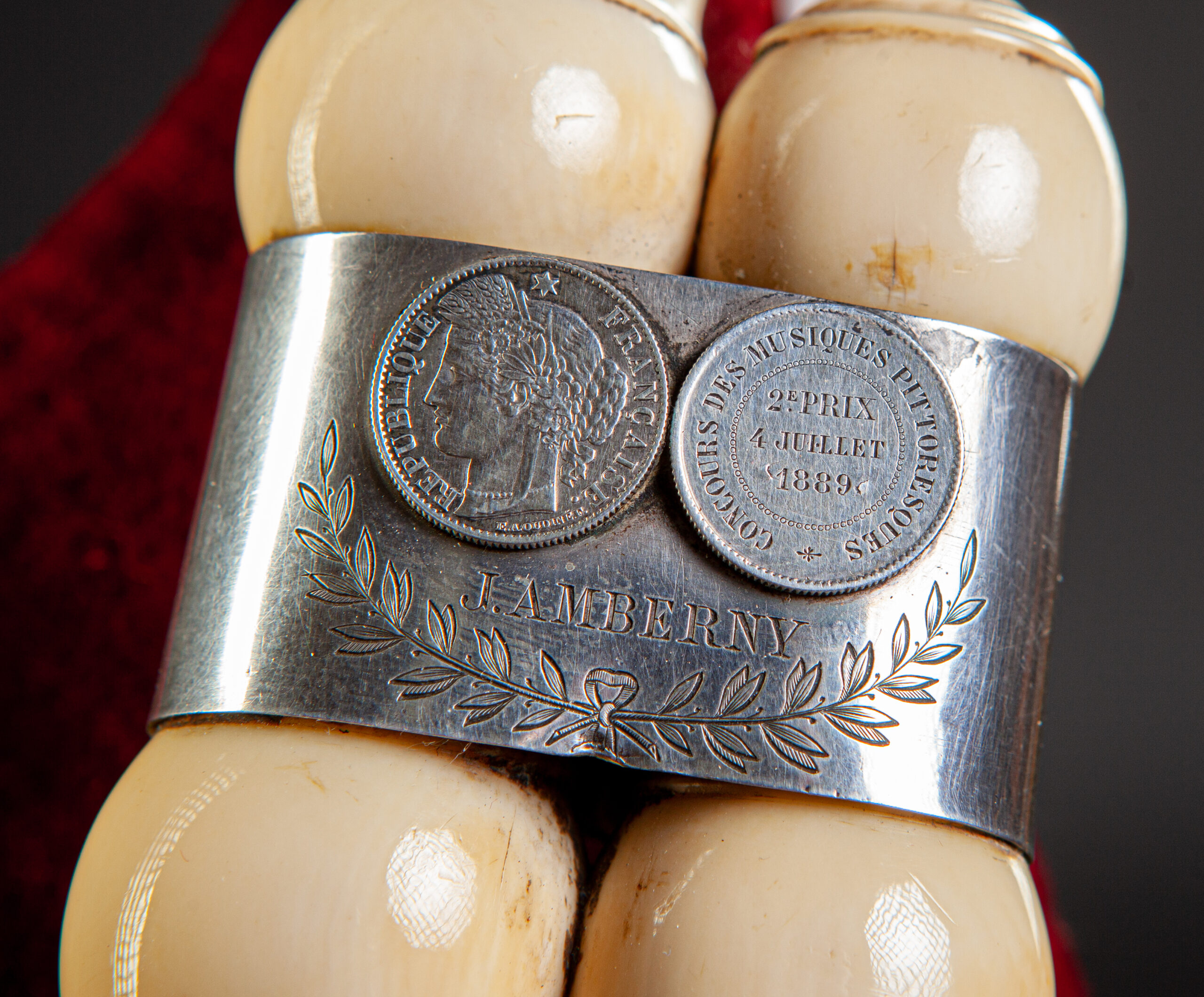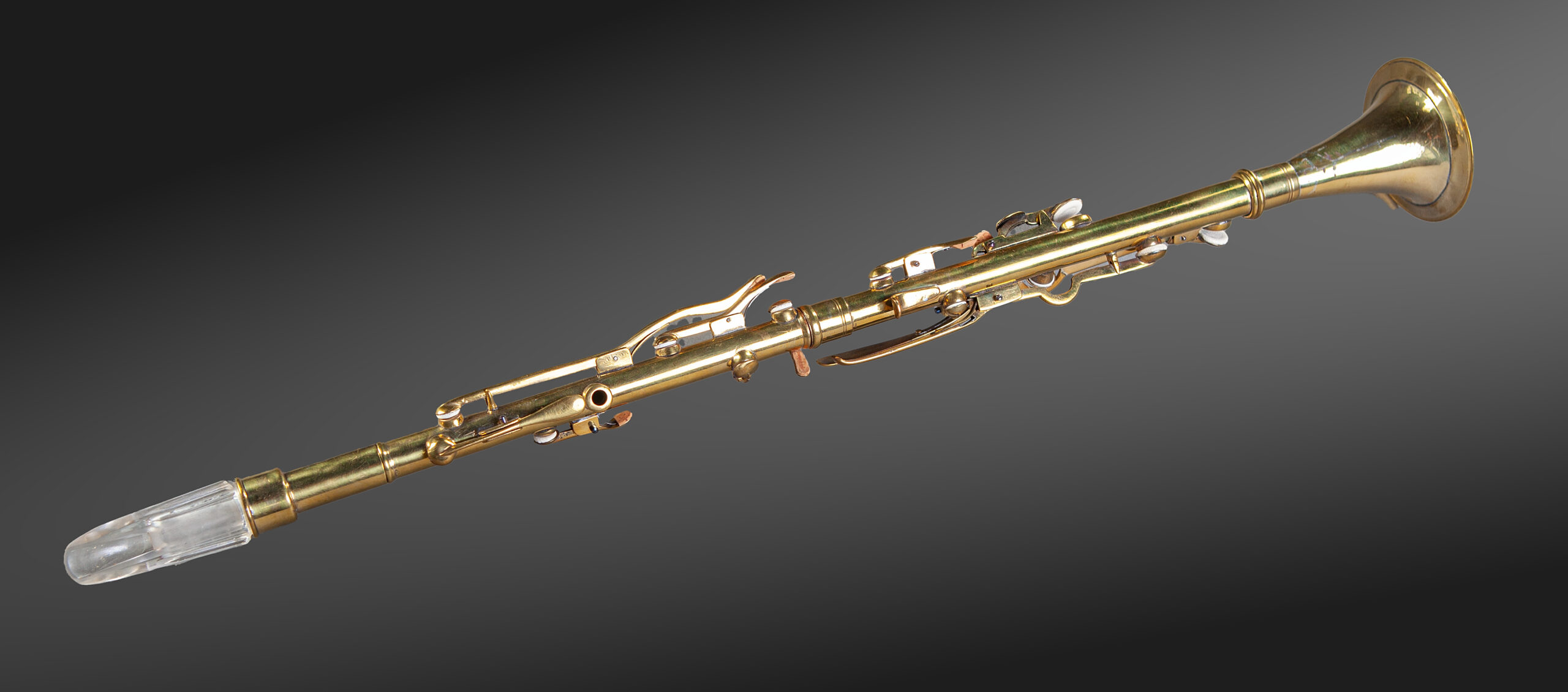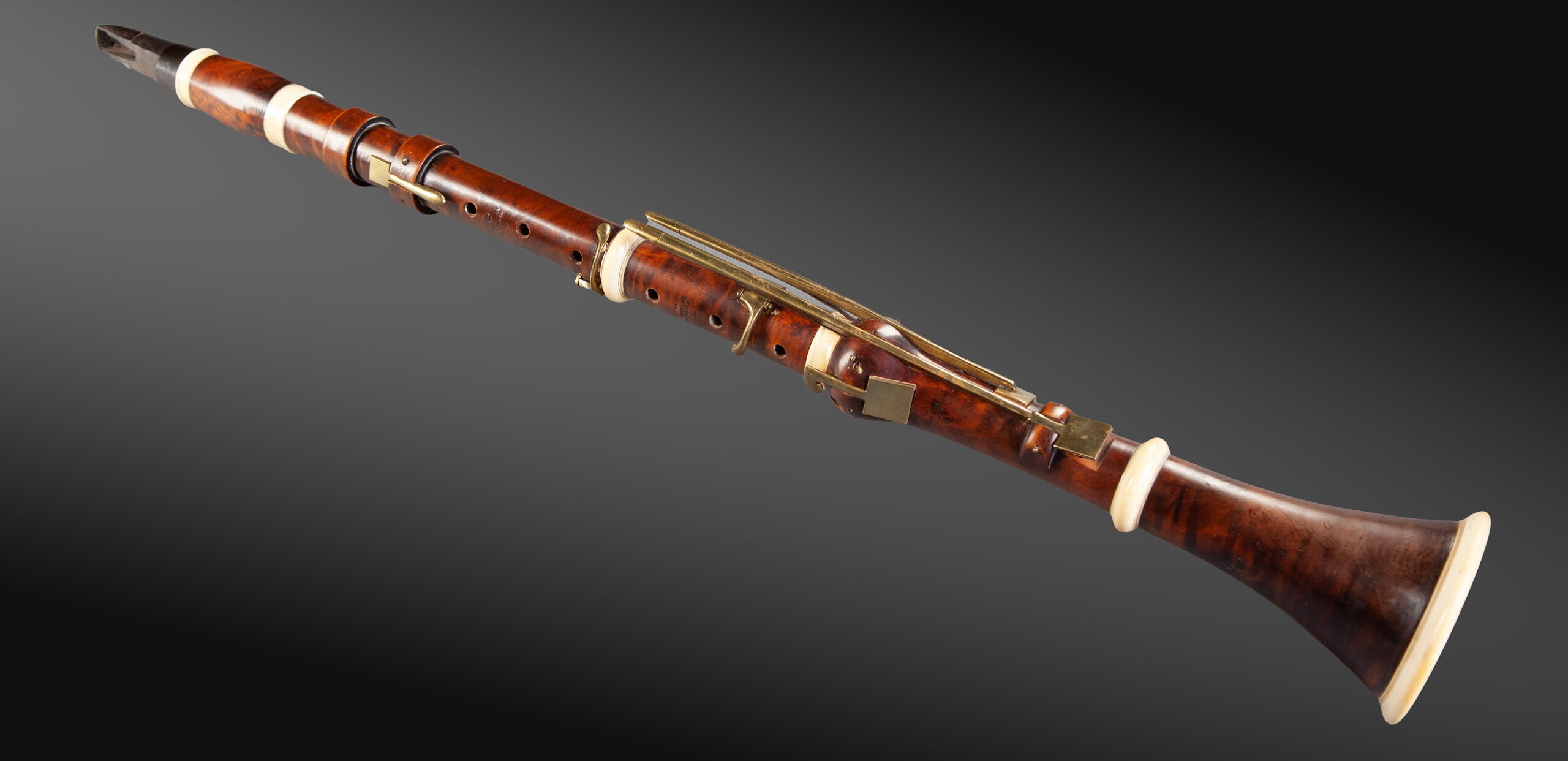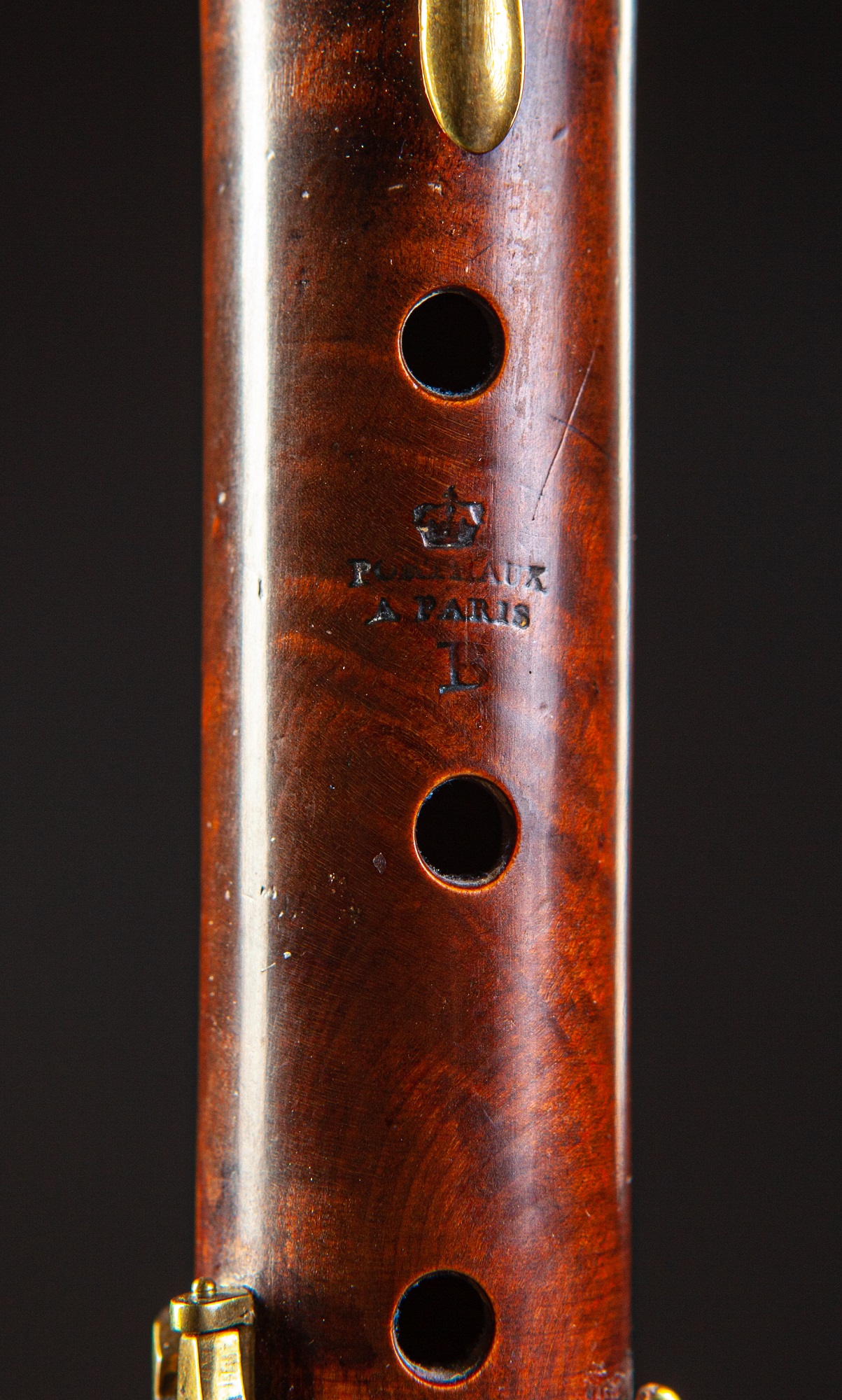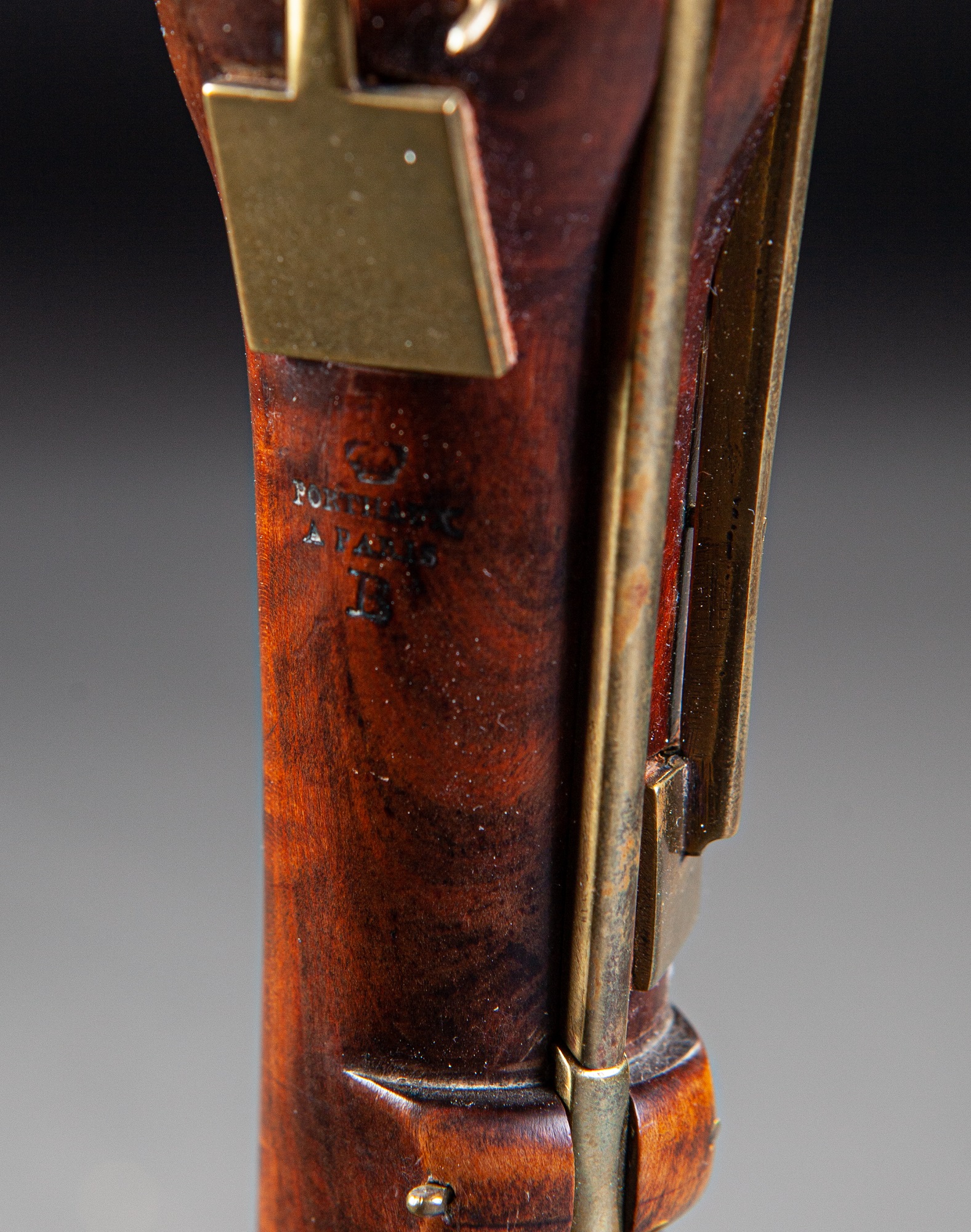CONTRA BASSOPHON
C. Geipel in Breslau.
Stamped on a plaque attached to the bell: “Contra Bafsophon / verfertigt von C. Geipel iun Breslau”. (Double bassophone made by C. Geipel in Breslau)
The need to strengthen the expression of the lower parts in the orchestra aroused interest in new research in instrumental construction. The “Contrebassophon”, invented in 1847 by Heinrich Joseph Haseneier (1798-1890), is one of the most impressive examples.
It is made up of three main maple tubes, parallel to each other and connected by brass bent tubing, on which a mechanism of rare complexity is attached…
The double bassophon influenced different makers throughout the 19th century, such as Geipel from Breslau (today Wroclav in Poland) Doelling from Potsdam, Bradka from Gumplodskirchen, to Alfred Morton from London.
The difficulties of adjustment, the bulk and the weight of the instrument obviously caused its disappearance.
Christoph Geipel and his brother Carl Wilhelm worked in the same father’s workshop in Breslau. William Waterhouse indicates a double bassophone signed “Chrp. Geipel” for Christoph, while he indicates “C. Geipel” as the mark of his older brother Carl-Wilhelm. Based on William’s “New Langwill Index”, we therefore consider that the instrument is by Carl Wilhelm Geipel
BASSOON
Savary in Paris.
Jean-Baptiste Savary (1751- c.1810) from a line of wood turners (and probably instrument makers) established in Picardy, he opened a workshop in Paris around 1780.
The instrument is made up of four parts in fruit wood (cherry?) and a brass bocal.
Six brass keys.
Total length: 125.5cm
BASSOON XVII – XVIIIth century.
Lindner. South Germany (?)
Bassoon composed of four maple parts and a brass bocal. The stamp “Linder” is legible on the large branch, the cap and the boot. The small branch is ringed at both ends and there is no trace of signature. However, observation of the wood, the size and the keys lead us to consider that it is probably the original branch. Split, it was repaired, sanded, and reinforced with brass rings.
Four brass keys.
NB: This bassoon is listed in “New Langwill index” p. 237.
Total length: 122.4cm.
CABRETTE
Benoit Amadieu (1804-1877)
The “cabrette” is the bagpipe used by Auvergne musicians who emigrated to Paris in the 19th century. It comes from the Parisian musette whose proportions have been modified to increase its sound power and make people dance in what then becomes the “bal musette”.
Benoit Amadieu is considered the most famous maker of his time. He is the one who adapted the instrument to the use and needs of bal-musette musicians. Recent work has allowed us to understand a little better the life of this almost mythical maker, about whom we knew nothing until now. (1)
This is the only preserved bagpipe that took part in the Concours des Musiques Pittoresques during the Universal Exhibition of 1889 in Paris.
The first prize was won by Jean Chassagne from la Pérelle district in Montluçon (Allier). (the bagpipes and the medal have disappeared) The second prize was won by Jean Amberny, from Mur-de-Barrez (Aveyron). The obverse and reverse of the medal are presented on the instrument headstock.
(1) Bruce Becamel – Fabrice Lenormand – Agnès Unterberger : « Paris Cabrette ; Enquête sur les générations pionnières. » ed : société-des-lettres-sciences-et-arts de Haute Auvergne. 2013.
CLARINET
Attributed to Antoine Halary (1788-1861)
Brass clarinet composed of two parts and equipped with thirteen round keys called “salt spoon” keys.
Length without spout: 56.5cm.
The instrument comes from the workshop of François Sudre (1844-1919) in Château-Thierry, successor to Halary. Considered one of the “inventors” of this type of brass clarinet.
“Crystal” glass mouthpiece by J.D. Breton, pupil and successor of Claude Laurent.
CLARINET
Porthaux in Paris. 18 – 19th c.
Dominique Porthaux, (1755 – 1839) was made master wind instrument maker on April 6, 1780. Specialized in the making of clarinets, oboes and bassoons. (He was the brother-in-law of Prudent Thieriot.)
The clarinet is made up of five boxwood parts with ivory mounts. It has five brass keys with square plates mounted on bosses and two others mounted on pivots.
The latter two, made also by Porthaux, are probably later, testifying as much to the technical evolution of the instrument as to the attachment of its owner.
Key of Bb.
Length without spout: 61.3cm
